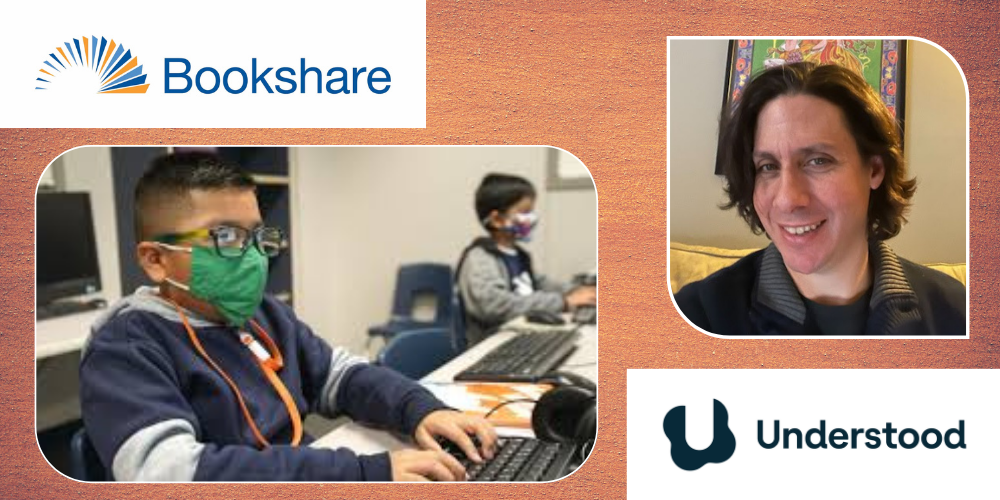Celebrate strengths of neurodivergent students and leverage inclusive technologies and UDL to put students on a positive path to reading success
By Andrew Kahn, PsyD
Seventy million Americans have learning and thinking differences, like ADHD and dyslexia. These differences are variations in how the brain processes information and can affect reading, writing, math, focus, and following directions.
While the COVID-19 pandemic has made many aspects of school more difficult for everyone, it has been especially challenging for students with learning and thinking differences. But, there are strategies teachers can use to support their neurodivergent students, especially when it comes to reading. (People with learning and thinking differences can be referred to as neurodivergent. Neurodiversity refers to the way people experience, interact with, and interpret the world in unique ways.)
By understanding students’ differences and needs, providing access to inclusive technologies, and using principles of Universal Design for Learning (UDL), teachers can help all students thrive. That includes their students with learning and thinking differences.
Explore students’ differences and acknowledge myths and stigma
It’s important to acknowledge the inaccurate and harmful beliefs about learning and thinking differences. Students with learning and thinking differences are often stereotyped as less capable, lazy, or needing to be pulled from their classrooms — all of which couldn’t be farther from the truth, but can nonetheless lower self-esteem and classroom engagement.
Because of this, students with learning and thinking differences often have emotional reactions to academic and social challenges. The simple act of handling a book or starting a reading lesson can trigger emotional and behavioral reactions that keep students from wanting to participate. Negative peer comparisons, embarrassment, and fear of failure can lead students to misbehave, try to escape, or have emotional meltdowns.
Educating ourselves about neurodiversity and addressing and combating these myths and stigmas is a key factor in helping students effectively navigate their journeys with reading and other academics.
Identify opportunities to use inclusive technologies
Students with learning and thinking differences require creativity and flexibility from their parents, school, and teachers. Students who have access to high-interest content through their preferred technologies are far more likely to feel that their learning is meaningful and personalized, and that they have a stake in their own education.
Inclusive technologies, like Bookshare, give students opportunities to feel more ownership and control over their learning, while also supporting their ability to navigate the emotional and social challenges of more traditional reading tasks. Students who can customize their learning experiences through different technologies may be more likely to engage with difficult tasks for longer time periods and with greater interest.
Additionally, current research from the Journal of Neuroscience indicates that reading via text-to-speech technologies activates the same areas of the brain as reading with your eyes. In fact, multisensory intervention approaches are the norm in most research-supported reading programs, and text-to-speech and customized ebook models are great ways to engage readers who may require extra support.
Lastly, integrating study aids and existing applications within programs like Bookshare can provide reading support — note-taking and writing assistance, vocabulary lists, and more — that students can use in their daily lives outside of school.
Use UDL principles
Students who learn and think differently need to be able to access content in ways that feel safe and supportive. UDL strongly supports providing students with access to differentiated instruction and high-interest learning tasks.
UDL approaches emphasize that there are many routes to instruction. Students may learn through traditional reading tasks, reading aloud, video models, and other experiential assignments. Teachers using UDL methods may evaluate student learning in varied ways, too. Students may express their learning through writing, giving verbal responses, singing and acting, drawing pictures or cartoons, and more. Pairing UDL with inclusive technologies in the classroom is an incredible way for teachers to make sure students feel comfortable and have a sense of control over their reading experience.
Students whose reading difficulties have created frustration and discomfort often lose their love for reading. But, as teachers start incorporating tools and technologies that can help kids own and personalize their reading experience, all children, including those with learning and thinking differences, will have more opportunities to love reading.
Learn how Bookshare can help students with learning differences
Andrew Kahn, PsyD, is a licensed psychologist specializing in working with individuals who learn and think differently. A subject matter expert at Understood, Dr. Kahn focuses on ADHD, autism spectrum disorders, anxiety, behavioral challenges, and social-emotional functioning.
About Bookshare
Bookshare is a FREE online library of over 5 million books that makes reading easier. With Bookshare, students who struggle with reading can access books in alternative formats and customize their reading experience to suit their individual learning style. Bookshare supports almost any reading device and students can read their books offline when an Internet connection is not available.
About Understood
Understood’s mission is to help those who learn and think differently, discover their potentials, take control, find community, and stay on positive paths along each stage of life’s journey.
Benetech, Bookshare’s parent organization, is proud to be a founding partner of Understood.


Hi there,
I’m looking for a modified version of the book, A Boy Called Bat. Searching the web, I have yet to find a large print version or a modified version for students on alternative achievement curriculum. Anyone have any leads??
Catherine, Bookshare has the book available in multiple formats: https://www.bookshare.org/browse/book/2364804. Here is more information on how teachers can sign up for a Bookshare account for their school: https://www.bookshare.org/cms/bookshare-me/schools/bis2022/teachers?utm_source=site&utm_medium=homepage&utm_campaign=bis2022e. Please contact our Customer Support team at support@bookshare.org or call us at 650-352-0198 (Hours: M-F 5AM-5PM Pacific Time) if you need help signing up for a Bookshare account.